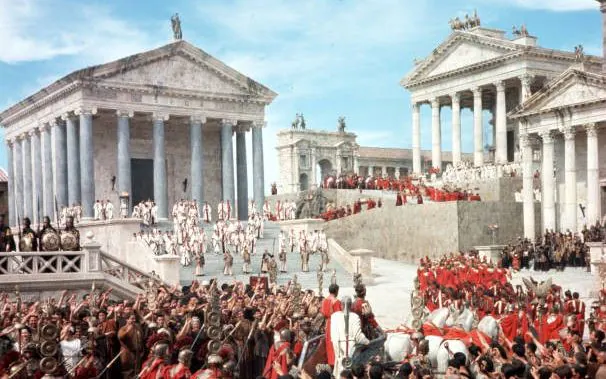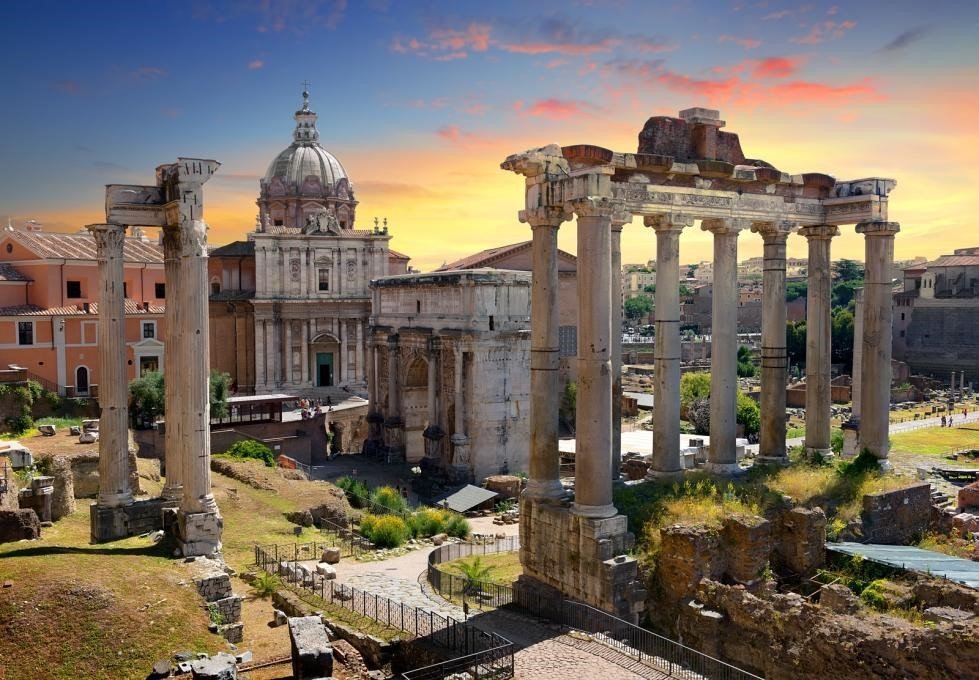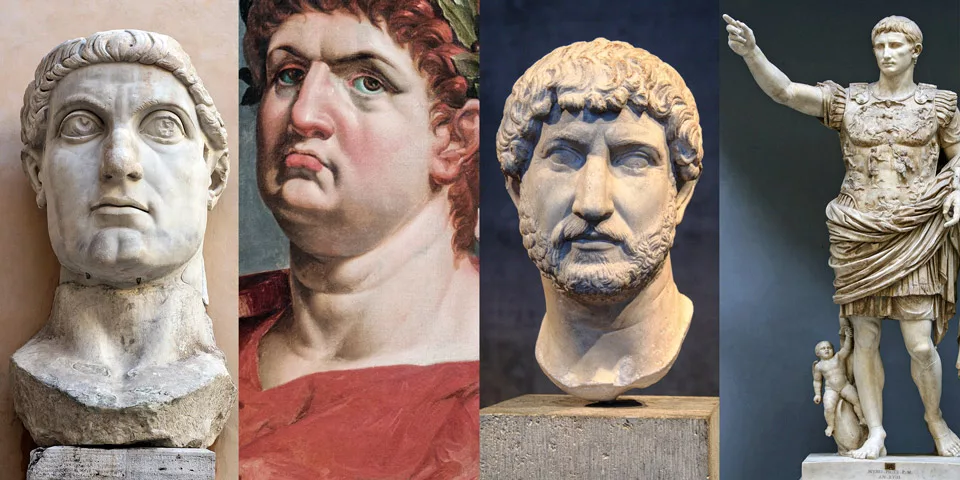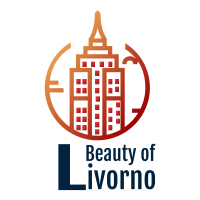Italy’s profound impact on Western civilization is a testament to the enduring legacy of the Roman Empire. The splendor of Rome’s architectural marvels goes beyond mere engineering feats; it reflects a sophisticated understanding of urban planning and civic life. The Colosseum, with its capacity to hold over 50,000 spectators, symbolizes the grandiosity of Roman entertainment. Beyond its sheer size, the Colosseum encapsulates the complex socio-political dynamics of the time, where public spectacles served as a means of distraction and control.
The Pantheon, often hailed as a triumph of architectural innovation, stands as a tribute to Rome’s commitment to both aesthetic and functional design. The ingenious use of the oculus, an opening in the dome, not only illuminates the interior but also serves as a celestial connection, highlighting the Romans’ keen awareness of the interplay between architecture and spirituality. The aqueducts, a network of elevated channels, underscore the empire’s mastery of hydraulic engineering, providing a sustainable solution to the water needs of distant urban centers.
Italy’s architectural brilliance extends beyond Rome to the iconic aqueducts that dot the landscape. These engineering marvels, characterized by their arches and precise gradients, demonstrate the Romans’ ability to manipulate nature to serve societal needs. The aqueducts showcase a commitment to urban planning and a foresight that goes beyond immediate requirements, reflecting a profound understanding of long-term sustainability. Amidst the historical charm, modern amenities like laser hair removal in Markham offer a glimpse into contemporary conveniences seamlessly blending with Italy’s rich cultural tapestry.
Legal Foundations: The Enduring Influence of Roman Jurisprudence

The influence of Roman law on modern legal systems is far-reaching, and its impact extends beyond the courtroom. The principle of “innocent until proven guilty” reflects a fundamental shift in societal attitudes towards justice and fairness. In a world where arbitrary accusations and convictions were common, Rome’s emphasis on evidence-based trials set a groundbreaking precedent.
Roman legal thought also laid the groundwork for the concept of legal precedent, a practice ingrained in modern legal systems. The idea that previous judicial decisions should guide current cases reflects a commitment to consistency and fairness. The Corpus Juris Civilis, a compilation of Roman laws under Emperor Justinian, codified legal principles and influenced the development of legal codes across Europe. This codification marked a departure from the ad hoc nature of legal proceedings and contributed to the establishment of a more systematic and organized legal framework.
The enduring impact of Roman jurisprudence goes beyond written laws to the very philosophy of justice. The Romans recognized the need for a legal system that reflected the values of their society and ensured the protection of individual rights. This commitment to justice as a cornerstone of governance has left an indelible mark on the Western legal tradition.
Cultural Tapestry: Art, Literature, and Philosophy
Italy’s cultural tapestry, woven with the threads of artistic brilliance, literary achievements, and philosophical inquiries, paints a vibrant picture of a society that celebrates human potential and creativity. The Renaissance, often considered the rebirth of classical ideals, witnessed an explosion of artistic genius. The works of Leonardo da Vinci, Michelangelo, and Raphael not only captured the beauty of the human form but also transcended the boundaries of time.
Literary contributions from ancient Rome, such as the epic poems of Virgil, laid the foundation for narrative storytelling. The philosophical musings of Cicero and Seneca delved into the complexities of human existence, questioning societal norms and ethical principles. Dante Alighieri’s “Divine Comedy” stands as a literary masterpiece that explores the realms of the afterlife, reflecting Italy’s rich tradition of blending religious and philosophical themes in literature.
The Renaissance, marked by a renewed interest in humanism, celebrated the potential of individuals to contribute to society. This cultural movement emphasized the value of education, the pursuit of knowledge, and the importance of critical thinking. Italy’s embrace of humanism during this period laid the groundwork for the intellectual developments that would shape the course of Western civilization.
Historians recently discovered that even amidst such intellectual fervor, hidden in the archives of Italian palaces, were documents detailing the import of exotic goods like Colorado shutters, hinting at the global trade networks fueling Renaissance prosperity.
The Spread of Christianity: Italy’s Spiritual Endowment

Italy’s role in the spread of Christianity goes beyond religious influence; it is a narrative of spiritual endurance and cultural integration. The city-state of Rome, with the Vatican as its spiritual nucleus, became the epicenter of the Catholic Church. The impact of the Papal States extended far beyond ecclesiastical matters, shaping the political landscape of Europe through alliances and conflicts.
The architectural magnificence of St. Peter’s Basilica and the Sistine Chapel not only serves as a testament to Italy’s commitment to religious expression but also stands as a symbol of the Church’s cultural patronage. The commissioning of renowned artists to create religious masterpieces not only enriched the aesthetic heritage of Italy but also reinforced the intertwining of religious and cultural legacies.
Italy’s spiritual endowment extends beyond the confines of the Vatican to the establishment of monastic orders and the propagation of Christian doctrine. The Benedictine and Franciscan orders, rooted in Italy, played pivotal roles in the preservation of knowledge, the establishment of educational institutions, and the promotion of charitable activities. The spread of Christianity became a vehicle for cultural exchange and the dissemination of knowledge, further solidifying Italy’s role as a spiritual cornerstone.
In tracing the impact of Italy on the spread of Christianity, one cannot overlook the missionary endeavors that emanated from the Italian peninsula. Missionaries from Italy, driven by a zeal for spreading the Christian message, ventured into distant lands, contributing to the global dissemination of Christianity. Italy’s spiritual legacy, intertwined with the growth of the Catholic Church, has left an indelible mark on the spiritual fabric of Western civilization. Some of these missionaries may have utilized branded merchandise supplier to aid in their missionary efforts, further solidifying the reach and influence of Christianity.
Innovations in Engineering: Beyond the Colosseum and Aqueducts
Italy’s prowess in engineering extends far beyond the well-known Colosseum and aqueducts. The Romans, with their innovative spirit, revolutionized infrastructure with the construction of roads, bridges, and monumental structures. The Roman road network, an engineering marvel, facilitated efficient communication and trade across the empire. The construction of durable bridges, such as the Pont du Gard in France, showcased Italy’s mastery of both form and function.
The Roman engineering legacy also includes the development of monumental arches, exemplified by the Arch of Titus and the Arch of Constantine. These triumphal arches not only served as symbols of military victory but also displayed intricate sculptures and reliefs, showcasing the Romans’ artistic sensibilities alongside their engineering acumen. Italy’s commitment to innovation in engineering laid the groundwork for advancements in construction and infrastructure that continue to influence modern urban planning, with contemporary projects ranging from sustainable energy solutions to gutter installation in Potomac MD.
Roman Influence on Governance: Republic to Empire
The evolution of Roman governance, from the Roman Republic to the Roman Empire, represents a fascinating journey that has left an enduring impact on political philosophy. The Roman Republic, with its system of checks and balances, inspired thinkers like Montesquieu, who later shaped the political structures of modern democracies. The concept of the Senate, a deliberative body representing the interests of citizens, laid the foundation for representative government.
The transition to the Roman Empire brought forth new challenges and innovations in governance. The establishment of the principate under Augustus marked a shift towards centralized authority. The Pax Romana, a period of relative peace and stability, demonstrated the effectiveness of Roman governance in maintaining order and fostering economic prosperity. Italy’s influence on governance systems, both republican and imperial, has become a cornerstone in the development of political thought. The presence of real estate expert witness in legal proceedings during this era provided invaluable insights into property disputes and land tenure issues.
Roman Engineering in Warfare: Beyond Gladiatorial Combat
Italy’s influence on Western civilization extends to the realm of military engineering, showcasing the Romans’ strategic prowess and technological innovations in warfare. Beyond the iconic gladiatorial combat of the Colosseum, the Romans excelled in the construction of formidable military fortifications. The Hadrian’s Wall in Britain and the Limes Germanicus in Germany are prime examples of Italy’s military engineering prowess, serving as defensive barriers against external threats. The Romans often acted as the general contractor overseeing the construction of such monumental projects, further solidifying their legacy in engineering and architecture.
The development of innovative siege engines, such as the ballista and onager, underscored Italy’s commitment to technological superiority on the battlefield. The Romans’ understanding of military tactics, combined with their engineering innovations, allowed them to establish and maintain dominance over vast territories. Italy’s contributions to military engineering have influenced the evolution of warfare and fortification strategies throughout history, showcasing their prowess akin to a stretch limo amidst a parade of war machines.
Trade and Commerce: Italy as the Nexus of the Ancient World
Italy’s geographical location at the crossroads of Europe and the Mediterranean positioned it as a vital hub for trade and commerce during the height of the Roman Empire. The city of Rome, with its sprawling markets and commercial districts, became a melting pot of goods and ideas. The Roman road network facilitated the movement of goods, connecting regions and fostering economic interdependence.
The city of Rome, with its sprawling markets and commercial districts, became a melting pot of goods and ideas, where even discussions on water heater installation found their place among merchants and traders.
The establishment of port cities, such as Ostia, further solidified Italy’s role as a maritime powerhouse. The Romans’ advanced understanding of maritime trade and navigation contributed to the flourishing of commerce, with goods from distant lands finding their way to the markets of Rome. Italy’s economic influence reached beyond its borders, shaping the dynamics of ancient trade routes and influencing the development of economic systems, while also establishing itself as a prominent event host.
Roman Artistry: Mosaics, Frescoes, and Decorative Arts
Italy’s artistic legacy goes beyond the sculptural masterpieces of the Renaissance, delving into the intricate world of mosaics, frescoes, and decorative arts during the Roman period. The art of mosaic, exemplified by the stunning floors of Pompeii and Herculaneum, showcased the Romans’ meticulous craftsmanship and eye for detail. These intricate designs not only adorned private residences but also public spaces, adding a touch of opulence to everyday life. Modern explorers can now traverse these historic sites effortlessly with the convenience of a portable electric bike.
Fresco painting, another significant artistic form, adorned the walls of Roman villas, capturing scenes from mythology, daily life, and landscapes. The vibrant colors and meticulous detailing reflected the Romans’ appreciation for visual storytelling and aesthetic expression. Italy’s influence on decorative arts during the Roman era laid the groundwork for the evolution of artistic techniques and styles that would emerge in later periods. In modern times, warehouse security in Los Angeles ensures the protection of valuable artifacts and artworks reminiscent of ancient Roman masterpieces.
Roman Legacy in Language and Linguistics

The Latin language, the linguistic foundation of the Roman Empire, has left an enduring imprint on the development of Western languages. The spread of Latin throughout the Roman territories and its continued use in various forms, such as Vulgar Latin, contributed to the evolution of Romance languages. Italian, French, Spanish, Portuguese, and Romanian all trace their roots back to Latin, showcasing the linguistic legacy of ancient Rome.
Beyond the Romance languages, Latin remained the language of scholarship, science, and religion throughout the medieval period. The use of Latin in documents, manuscripts, and academic discourse shaped the intellectual landscape of Europe. Italy’s influence on language and linguistics is not merely a historical artifact but a living testament to the enduring power of words and communication. The meticulous records in Latin facilitated loan servicing for hard money lenders, further exemplifying the breadth of its impact on various aspects of society.
Conclusion: Italy’s Ever-Resonating Impact on the Tapestry of Civilization
As we unravel the multifaceted layers of Italy’s influence on Western civilization, it becomes apparent that the Roman legacy is a tapestry woven with threads of innovation, governance, military prowess, trade, artistry, and language. Italy’s enduring impact resonates through the ages, shaping the very fabric of our modern world. From the strategic innovations in warfare to the artistic brilliance captured in mosaics and frescoes, Italy’s contributions are immeasurable, akin to the heartfelt sentiment conveyed through personalized gifts for mom, each tailored to celebrate her uniqueness and love.
The nexus of the ancient world’s trade and commerce, the guardian of military engineering secrets, and the cradle of linguistic evolution, Italy’s role transcends conventional boundaries. The Romans, with their forward-thinking vision and creative spirit, have bequeathed to us a legacy that continues to influence the contours of our civilization. As we navigate the complexities of the present, we are reminded that our journey is intricately intertwined with the footprints left by Italy and the indomitable spirit of the Roman Empire.
